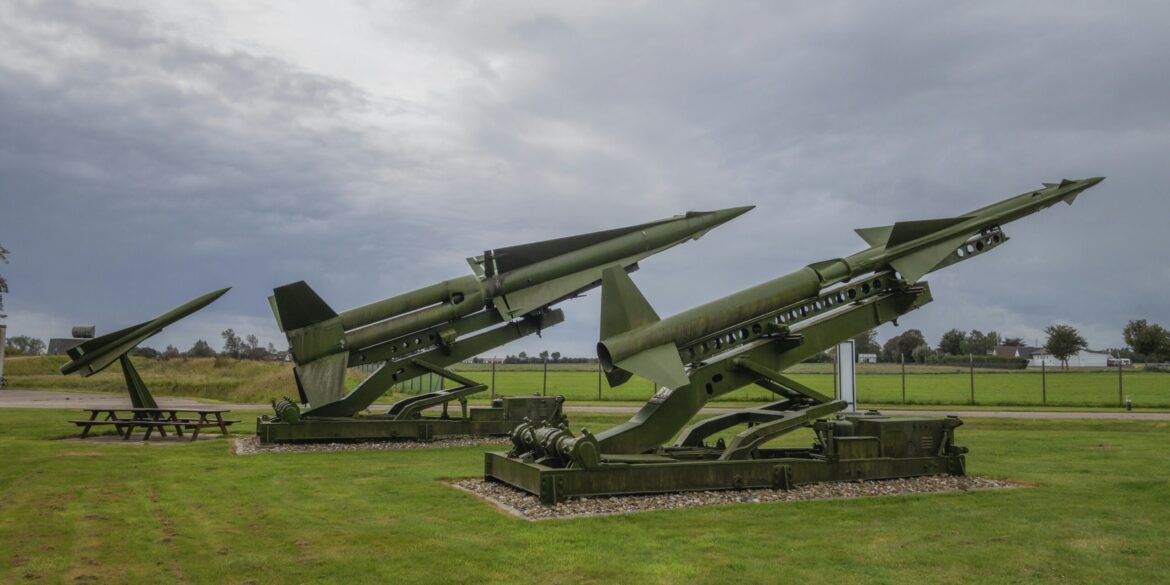In a bold move aimed at strengthening the United States’ defense capabilities, President Donald Trump has unveiled a $25 billion funding initiative to enhance the nation’s missile defense infrastructure. The initiative, dubbed the “Golden Dome” missile defense system, is designed to intercept a broad range of global and space-based threats, including ballistic missiles, cyber-attacks, and emerging technologies from adversarial nations.
The announcement, made during a press conference at the White House, underscores the administration’s continued focus on national security and military modernization. The Golden Dome project will be overseen by Space Force General Michael Guetlein, who has been tasked with ensuring the integration of cutting-edge technologies into the existing defense framework. The initiative is set to be a significant expansion of the U.S. missile defense system, aiming to provide enhanced protection for the homeland as well as critical military assets abroad.
“We are investing in the next generation of defense systems to ensure that America remains protected from evolving threats, whether they come from hostile nations or outer space,” President Trump stated during the announcement. He emphasized that the Golden Dome system would be a vital tool in safeguarding the country against missile attacks, particularly from adversaries such as North Korea, Iran, and potentially even emerging threats from space-based weapons.
The Golden Dome system, named for its ability to protect U.S. interests globally, will integrate advanced radar, satellite systems, and artificial intelligence (AI) to create an interlinked defense shield. According to military experts, the system will be able to detect and neutralize threats from various ranges, including those launched from intercontinental ballistic missiles (ICBMs) or low Earth orbit. The project is expected to significantly enhance U.S. defenses against missile threats, including those that have increasingly incorporated space technologies.
However, the announcement has drawn criticism from various quarters, particularly regarding the initiative’s hefty price tag. The $25 billion allocated to the project is seen by some critics as a significant portion of the federal budget, especially amidst ongoing concerns about the rising costs of defense spending and the potential impact on other critical military priorities. Lawmakers have expressed reservations about whether such an extensive missile defense system is the most effective use of taxpayer money, with some calling for more strategic investments in areas like cyber defense and personnel readiness.
“This massive expenditure may divert much-needed resources from other essential areas of defense, such as modernizing conventional forces or addressing cybersecurity threats that are becoming more prevalent,” said Senator Mark Warner (D-VA), a member of the Senate Armed Services Committee. “While missile defense is important, we need a balanced approach that addresses all aspects of national security.”
In addition to budget concerns, there are also questions about the practicality and effectiveness of the Golden Dome system. Critics argue that, despite advancements in missile defense technology, no system has yet proven to be entirely foolproof against the increasingly sophisticated and unpredictable nature of missile threats. Moreover, the integration of new technologies into existing defense systems is often fraught with technical and logistical challenges, raising doubts about the project’s long-term feasibility and effectiveness.
Despite these concerns, proponents of the initiative stress the importance of staying ahead of emerging threats. Space Force General Michael Guetlein, who is overseeing the project, emphasized the need to stay at the forefront of technological developments to protect U.S. interests in an increasingly complex global security environment. “The threats we face today are unlike anything we’ve encountered in the past,” General Guetlein said in a statement. “The Golden Dome system will ensure that the U.S. has the technological edge to defend against any missile threat, whether it originates from a rogue state or from outer space.”
The announcement of the Golden Dome initiative comes amid broader debates over U.S. defense spending, national security strategies, and military priorities. While the Trump administration has repeatedly emphasized the need to modernize the nation’s defense systems to stay competitive with adversaries like China and Russia, the significant increase in spending on missile defense has raised questions about the balance between military readiness and fiscal responsibility.
The initiative also reflects growing concerns over space-based threats, as space technology becomes an increasingly vital component of military operations. The U.S. Space Force, established in 2019, has been tasked with addressing the growing strategic importance of space in national security, and the Golden Dome system is expected to play a central role in this effort.
As the initiative progresses, it will likely face significant scrutiny from both lawmakers and military experts, particularly in terms of its cost and overall effectiveness. For now, the Trump administration is pushing ahead with the plan, with the goal of ensuring that the U.S. remains prepared for the evolving nature of global security threats.
The funding for the Golden Dome project will be part of the fiscal year’s defense budget, with initial investments slated to begin in 2022. Full implementation is expected to take several years, with system testing and integration into existing defense infrastructure taking place over the course of the next decade.

